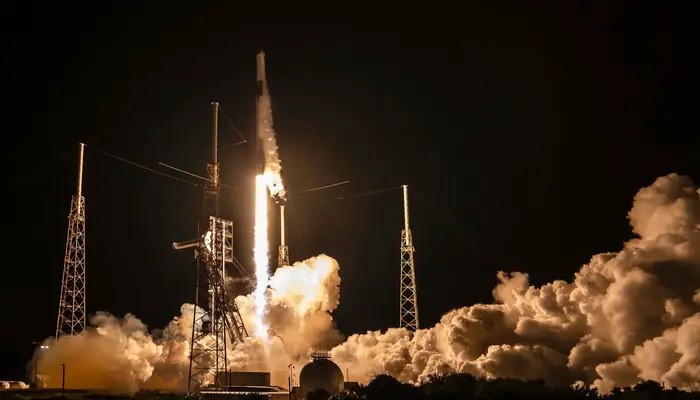SpaceX achieved a historic milestone as its Dragon spacecraft completed its 50th mission to the International Space Station (ISS). The launch, carried out from Cape Canaveral, Florida, on Sunday, highlighted the company’s consistent role in NASA’s Commercial Resupply Services program and its growing influence in human space exploration.
A Landmark Mission
The latest mission, officially named CRS-33, carried supplies and research experiments to the ISS. This marked the 50th time that a Dragon capsule traveled to the orbiting laboratory since its debut in May 2012, when it performed a demonstration resupply flight.
For SpaceX, this milestone demonstrates more than routine success. It showcases the company’s ability to provide reliable and repeatable transportation for NASA, cementing its role as a leader in private spaceflight.
Smooth Launch and Landing
The Falcon 9 rocket lifted off successfully, carrying the Dragon spacecraft into orbit. Following stage separation, the first stage booster landed smoothly on the droneship A Shortfall of Gravitas, stationed in the Atlantic Ocean.
This landing represented the booster’s seventh flight. The reuse of Falcon 9 boosters has become central to SpaceX’s strategy, reducing costs and enhancing launch frequency.
The Dragon spacecraft, making its third trip for a resupply mission, is expected to dock autonomously with the ISS after an estimated 28-hour flight.
Read: Ozone Recovery Might Lead to More Global Warming
Cargo on Board
The CRS-33 mission is delivering nearly 5,000 pounds (2,268 kilograms) of cargo to astronauts aboard the ISS. This shipment includes food, essential supplies, and scientific experiments that will support ongoing and future missions.
The cargo is not limited to basic resupply. SpaceX and NASA emphasized that CRS-33 carries experiments with direct implications for long-duration human spaceflight. These projects are designed to test technologies and medical approaches that could one day support astronauts on missions to the Moon, Mars, and beyond.
Research for the Future
Among the 50 different studies aboard Dragon, one investigation focuses on bone health in microgravity. Astronauts often experience bone density loss in space, a challenge that poses risks for long-term missions.
“This research team is testing out the hypothesis that blocking a certain protein in the body that is known to promote bone loss or bone health changes may actually help reduce the overall bone loss that astronauts experience in space,” explained Heidi Parris, associate program scientist for the ISS Program.
If successful, this study could provide crucial insights for both space explorers and people on Earth who suffer from osteoporosis or other bone-related conditions.
Scientific Scope
Beyond bone health, CRS-33 carries a wide range of experiments. These include biological studies, materials testing, and technology demonstrations. Each project contributes to a better understanding of how humans and equipment function in microgravity.
For scientists on Earth, the ISS continues to serve as a unique laboratory. With consistent access through SpaceX missions, researchers can plan long-term studies and receive results more quickly than ever before.
A Decade of Dragon
When the Dragon capsule first docked with the ISS in 2012, it marked the beginning of commercial cargo transport to the station. At the time, the achievement proved that private companies could handle missions once limited to government agencies.
Now, with 50 missions completed, Dragon has become an integral part of ISS operations. It regularly delivers critical supplies, scientific instruments, and even returns cargo safely to Earth. Few spacecraft in history have built such a strong record of repeat performance.
Reusability at the Core
The CRS-33 launch also underscored SpaceX’s ongoing commitment to reusability. The first-stage booster’s seventh landing demonstrates the durability of Falcon 9 hardware. Each successful recovery reduces launch costs and accelerates timelines.
For Dragon, reusability also plays a role. This capsule has already completed two previous flights, making CRS-33 its third journey to orbit. The ability to refurbish and relaunch spacecraft has reshaped the economics of spaceflight.
Broader Implications
SpaceX’s continued success benefits more than NASA. It also influences international partners, commercial customers, and the broader aerospace industry. By proving that private companies can repeatedly deliver cargo and conduct scientific missions, SpaceX paves the way for new markets in space transportation.
The reliability of the Dragon spacecraft reassures astronauts and researchers who depend on timely deliveries. It also allows NASA to focus resources on future exploration programs, such as the Artemis missions to the Moon.
Follow us on Instagram, YouTube, Facebook,, X and TikTok for latest updates
